There’s something about a mountain path that calls to us city-dwellers like a siren song. Maybe it’s the promise of silence broken only by birdsong, or perhaps it’s the intoxicating scent of pine and earth after a summer rain. Whatever draws you to the trail, I’ve spent the better part of a decade chasing that feeling across America’s most spectacular landscapes—sometimes triumphantly, sometimes nursing blisters the size of silver dollars.
Have you ever noticed how hiking is the great equalizer? You can be a CEO on Monday, but by Saturday afternoon on a steep switchback in Glacier National Park, you’re just another sweaty human being questioning your life choices as your lungs scream for mercy. I’ve been there more times than I care to admit.
Finding Your Perfect Trail: America’s Hiking Paradise
The United States offers such a staggering diversity of hiking experiences that choosing where to begin feels like standing in front of a 31-flavor ice cream shop as a sugar-deprived five-year-old. Desert mesas that glow red at sunset? Check. Alpine lakes so blue they look Photoshopped? Got those too. Ancient forests where trees have witnessed centuries pass? We’ve got them in spades.
What I’ve learned over countless miles is that the “best” trail isn’t universal—it’s deeply personal. Your perfect hike might be my nightmare (looking at you, Angel’s Landing and your terrifying chain section). But after logging thousands of miles across all terrains, I’ve compiled what I genuinely believe are America’s most rewarding trails for every type of nature enthusiast.
The Pacific Crest Trail: The Ultimate Long-Distance Dream
The Pacific Crest Trail (PCT) stretches a mind-boggling 2,650 miles from Mexico to Canada through California, Oregon, and Washington. It’s the Holy Grail for many hikers, myself included, though I’ve only tackled sections rather than the whole beast.
Last summer, I spent three weeks on the Northern California portion, where the trail winds through the Trinity Alps. One evening, after a brutal 15-mile day that had my knees filing formal complaints, I stumbled upon a hidden alpine meadow absolutely exploding with wildflowers. As the setting sun turned everything golden, I remember thinking: “This is why people quit their jobs to do this.”
The PCT isn’t a casual weekend affair—it’s a life-altering commitment requiring months of preparation. But even trekking small sections rewards you with some of America’s most pristine wilderness views. The John Muir Trail section through the Sierra Nevada remains the crown jewel for many, with its granite cathedrals and star-filled nights that make you feel impossibly small.
The Appalachian Trail: History Beneath Your Boots
While the PCT gets Hollywood treatment, the Appalachian Trail (AT) is America’s original long-distance path—steeped in history and covering 2,190 miles across 14 eastern states. What it lacks in vast panoramas, it makes up for in intimate forest charm and cultural heritage.
The AT feels more accessible than its western cousins, with trail towns never too far away and a unique shelter system that fosters a tight-knit hiking community. During my section hike through the Smoky Mountains, I shared an evening with a 72-year-old retiree tackling her first thru-hike, a pair of newlyweds hiking the whole trail as an extended honeymoon, and a former Wall Street banker who’d “had enough of staring at screens.” The trail creates unusual friendships that would never form elsewhere.
The forest tunnel of the AT occasionally opens to reveal stunning vistas—McAfee Knob in Virginia offers what might be the most photographed outlook on the entire trail. But the magic of the AT lies in its accessibility to population centers; millions of Americans live within a day’s drive of a trailhead.
Desert Dreams: The Southwest’s Geological Wonders
Grand Canyon Rim-to-Rim: Geology’s Greatest Classroom
If the Grand Canyon isn’t on your hiking bucket list, we need to have a serious talk. The rim-to-rim hike isn’t just a trail; it’s a journey through Earth’s history, with each descending layer representing millions of years of geological storytelling.
Fair warning, though: this isn’t a hike for the faint-hearted or unprepared. The distance—about 24 miles depending on your route—isn’t the primary challenge. It’s the combination of extreme temperature swings, minimal shade, and relentless elevation change that brings many hikers to their knees.
My own rim-to-rim attempt taught me a humbling lesson in respecting nature. Despite being in decent shape and carrying what I thought was plenty of water, I found myself rationing my last few sips with still three miles of punishing uphill to go. A seasoned park ranger who spotted me resting (read: contemplating my poor life choices) shared her extra water and some wisdom: “The Canyon makes you small again—and that’s not a bad thing to remember.”
If you do attempt this epic journey, consider splitting it into two days with an overnight at Phantom Ranch (book literally a year in advance—I’m not exaggerating). And never, ever hike during summer months unless you enjoy flirting with heat stroke.
Zion National Park: Angels Landing and The Narrows
Utah’s Zion National Park offers two completely different but equally spectacular hikes. Angels Landing delivers heart-stopping exposure along a knife-edge ridge with chains for security, while The Narrows invites you to wade through a slot canyon with walls soaring 1,000 feet above the Virgin River.
I hiked Angels Landing on a crisp October morning, starting before dawn to avoid crowds on the chain section. Standing on that exposed fin of rock as the first sunlight painted the canyon walls in brilliant orange and red remains one of my most treasured outdoor memories. Just don’t look down if heights make your stomach flip—it’s a 1,500-foot drop on either side.
The Narrows presents an entirely different adventure—one where you’re actively walking in the river itself between towering sandstone walls that narrow to just 20 feet in places. It feels like entering Earth’s most magnificent cathedral. Rent neoprene socks and special river shoes in Springdale if you’re hiking outside summer; that water stays shockingly cold year-round.
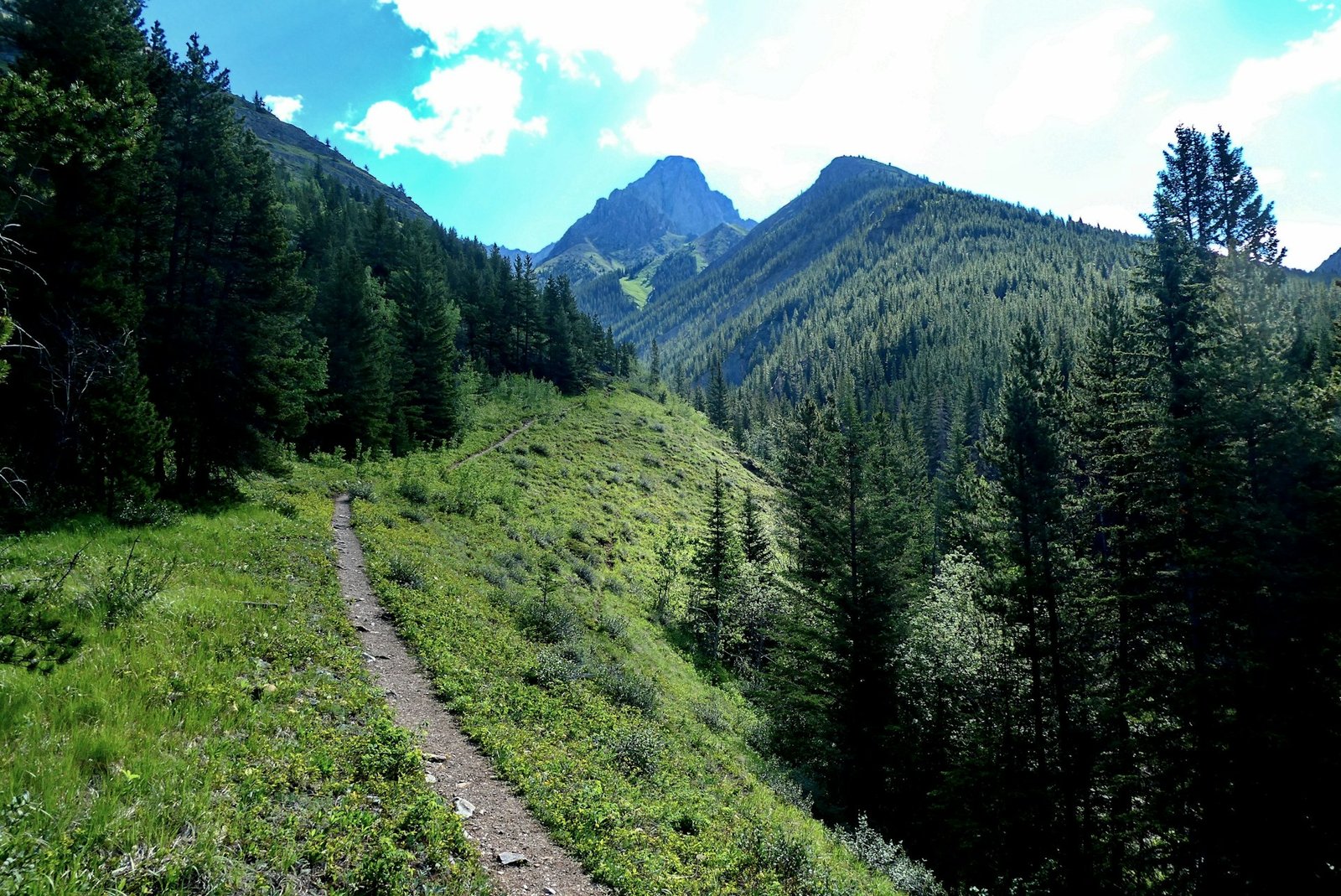
Mountain Majesty: Alpine Adventures
Glacier National Park: The Highline Trail
Montana’s Glacier National Park feels like stepping into an alpine postcard, and the Highline Trail delivers the experience you’re imagining. This 11.8-mile path follows the Continental Divide with views so consistently spectacular they almost become exhausting.
What makes this trail special isn’t just the scenery—though the glacier-carved valleys and wildflower meadows are certifiably jaw-dropping—it’s the wildlife. Where else can you round a bend and encounter mountain goats posing like they’re waiting for their Instagram moment? During my hike last July, we counted seven different grizzly bears (all at safe distances, thankfully) grazing on huckleberries across various slopes.
The trail begins at Logan Pass and offers relatively moderate terrain given the exceptional views, making it accessible to reasonably fit hikers. Just bring bear spray and know how to use it—this isn’t theoretical advice.
Mount Rainier: Wonderland Trail
Circling the entirety of Washington’s iconic volcano, the 93-mile Wonderland Trail represents Pacific Northwest hiking at its finest. Ancient forests give way to subalpine meadows, glacial moraines, and rushing waterfalls—all while the mountain itself looms impossibly large in changing light.
While the full circuit typically takes 10-14 days, day hikers can sample sections like the Skyline Trail from Paradise, which delivers an astonishing amount of beauty in a manageable 5.5-mile loop. I hiked it during peak wildflower season when the meadows transformed into a painter’s palette of lupine, paintbrush, and aster beneath the massive glacier-covered peak.
The full Wonderland demands serious preparation, including reserved camping permits that disappear within minutes when released each spring. But those who commit experience one of America’s most diverse and challenging loop trails.
Eastern Treasures: Beyond the Crowds
Acadia National Park: Ocean Path and Precipice Trail
Maine’s Acadia combines mountain and maritime environments in a uniquely New England package. The Ocean Path follows dramatic coastline where Atlantic waves crash against pink granite cliffs, while the Precipice Trail offers an iron-rung climbing adventure up exposed cliff faces.
I’ve hiked in 36 states, and nothing quite compares to watching the sunrise from Cadillac Mountain (the first place sunlight touches the continental US) before descending to explore tide pools teeming with marine life. Acadia perfectly demonstrates that exceptional hiking experiences don’t always require vast wilderness—sometimes they’re found where mountains meet the sea.
Great Smoky Mountains: Alum Cave to Mount LeConte
The most visited national park in America somehow still harbors secluded trails and quiet moments. The 11-mile round-trip to Mount LeConte via Alum Cave Trail showcases why these ancient mountains captivate generations of hikers.
The trail passes under Arch Rock, through old-growth forest, and past Inspiration Point before reaching LeConte Lodge—the highest guest lodge in the eastern US, accessible only by foot. I hiked this trail in October when the famous fall colors were peaking, creating a kaleidoscopic canopy that left me stopping every few minutes for yet another photo.
What makes the Smokies special is their biological diversity—they contain more tree species than all of northern Europe combined. The morning fog that gives these mountains their name creates an ethereal quality, especially when sunbeams break through to spotlight vibrant forest scenes.
Essential Gear: What Experienced Hikers Actually Use
After learning many lessons the hard way (nothing teaches faster than a downpour without rain gear), here’s what consistently earns space in my pack:
- Footwear: Salomon X Ultra 4 Mid GTX hiking boots for technical terrain; Altra Lone Peak trail runners for maintained paths
- Hydration: Platypus 3L reservoir for all-day hikes; Grayl GeoPress water purifier for backcountry water sources
- Navigation: Gaia GPS premium subscription (downloaded maps work without cell service); backup paper maps and compass I actually know how to use
- Safety: Black Diamond trekking poles (saved my knees countless times); Garmin inReach Mini satellite communicator for emergency alerts
- Comfort: Lightweight puffy jacket regardless of season (mountaintops get cold even in summer); Darn Tough socks (lifetime warranty they actually honor)
Remember: no amount of expensive gear replaces good judgment and proper preparation. I’ve seen people attempt serious trails in flip-flops and cotton clothing—don’t be that cautionary tale park rangers tell around their campfires.
Responsible Trail Etiquette: Leave No Trace
As more people discover hiking (thank you, Instagram), our collective impact on fragile ecosystems grows. Follow these principles to ensure these special places remain special:
- Pack out ALL trash—even fruit peels and nut shells
- Stay on established trails to prevent erosion and habitat damage
- Yield to uphill hikers (they’re working harder than you)
- Keep noise levels down—other hikers are seeking natural sounds
- Learn proper food storage for your region’s wildlife concerns
- Respect trail closures—they exist for ecological or safety reasons
I once watched a hiker collect someone else’s discarded energy gel packets for three miles until reaching a trash can. Be that person, not the one who left them.
Planning Your Adventure: When to Go Where
America’s hiking diversity means something’s always in prime season somewhere:
- Spring: Desert trails (Grand Canyon, Zion) before summer heat; Eastern forests for wildflowers
- Summer: Alpine regions (Glacier, Rainier) when high-elevation snow melts
- Fall: New England and Smoky Mountains for legendary foliage; Southwest for pleasant temperatures
- Winter: Southern deserts; snowshoe adventures in mountain regions for experienced winter hikers
Never underestimate seasonal differences. A trail that’s a pleasant stroll in June might be an ice-covered technical challenge in April or a scorching ordeal in August.
The Trail Less Traveled: Hidden Gems Worth Finding
While national parks deserve their fame, some of my most meaningful hiking experiences have come from lesser-known trails:
- Black Elk Wilderness (South Dakota): Cathedral Spires Trail offers Needles formations without Badlands crowds
- Grayson Highlands (Virginia): Wild ponies roam alpine meadows along this spectacular AT section
- Superstition Wilderness (Arizona): Weaver’s Needle loop combines desert beauty with fascinating lost gold mine legends
- Pemigewasset Loop (New Hampshire): White Mountain challenge covering eight 4,000-foot peaks
Sometimes the most rewarding paths are those where you can hike for hours without encountering another soul.
A Final Thought from the Trail
Hiking isn’t just exercise—it’s a way of connecting with something larger than ourselves. In a world increasingly mediated through screens, placing your actual feet on actual dirt creates an authenticity that’s becoming rare.
I still remember a moment on the Teton Crest Trail when an afternoon thunderstorm forced our group to take shelter under a rock overhang. As lightning cracked across the valley and rain transformed into hail then back to rain, a rainbow emerged against dark clouds. No photo could capture it, no words adequately describe it. It simply existed for those of us present in that moment.
That’s the real magic of hiking—not just the Instagram-worthy vistas, but the ephemeral experiences that belong only to those who put in the miles.
So lace up your boots, check the weather forecast one more time, and hit the trail. America’s natural treasures are waiting—blisters and all.
Frequently Asked Questions
What are the best beginner-friendly hiking trails in the US?
For beginners, I recommend Emerald Lake in Rocky Mountain National Park, the Rim Trail at Grand Canyon, Ocean Path in Acadia, Hidden Lake Overlook in Glacier, and Laurel Falls in Great Smoky Mountains. These offer spectacular scenery without technical difficulty.
How should I prepare for my first long-distance hike?
Start with shorter day hikes wearing your full pack weight, gradually increasing distance. Break in your boots thoroughly beforehand. Research water sources, develop a detailed meal plan, and consider a “shakedown hike” weekend before committing to longer adventures.
What safety equipment is essential for hiking in bear country?
In bear country, carry bear spray and know how to use it (practice with training canisters). Hike in groups when possible, make noise on the trail, store food properly (bear canisters or hanging techniques), and learn area-specific protocols through visitor centers.
How much water should I carry while hiking?
The general guideline is 1 liter per 2 hours of moderate hiking in moderate temperatures. Increase this to 1 liter per hour in hot conditions or strenuous terrain. Always research water sources beforehand and carry purification methods for backcountry sources.
What’s the best time of year to hike the Pacific Crest Trail?
Most northbound PCT thru-hikers start at the Mexican border in late April to early May. This timing helps avoid dangerous Sierra Nevada snowpack while allowing completion before early fall snow in Washington. Section hikers should research specific regional timing.
How do I prevent and treat blisters while hiking?
Prevention is key: wear properly fitted boots/shoes broken in before long hikes, use moisture-wicking socks, apply Body Glide or similar lubricant to potential hot spots, and address “hot spots” immediately with moleskin or tape before they become blisters.
What permits do I need for popular hiking destinations?
Permit requirements vary widely. Wilderness areas and national parks often require overnight permits (many through reservation systems). Some day hikes like The Wave in Arizona require advance lottery applications. Always check official park websites for current requirements.
How do I prepare physically for high-altitude hiking?
If possible, spend 1-2 days acclimatizing at moderate elevation before attempting high-altitude trails. Stay hydrated, avoid alcohol, ascend gradually (under 1,500 feet elevation gain per day if possible), and consider medications like Diamox after consulting a doctor.
What’s the best hiking gear for rainy conditions?
For wet conditions, invest in a quality waterproof/breathable jacket and pants (Gore-Tex or equivalent), waterproof your backpack (pack cover plus internal dry bags), wear moisture-wicking base layers, and consider quick-drying trail runners instead of waterlogged boots for moderate terrain.
How do I choose the right hiking boots?
Visit a specialty outdoor retailer for professional fitting. Consider your typical terrain (lightweight trail runners for maintained paths; sturdy boots for rocky/technical terrain), try boots late in the day when feet are swollen, wear your hiking socks during fitting, and prioritize comfort over break-in potential.
Top Hiking Resources and Recommendations
Essential Hiking Gear
- Osprey Talon 22 Daypack – Osprey Official – Perfect balance of comfort, organization, and durability for day hikes with excellent ventilation system.
- Garmin inReach Mini 2 – REI – Compact satellite communicator providing emergency SOS and basic messaging when out of cell range.
- Black Diamond Carbon Z Trekking Poles – Black Diamond Equipment – Ultralight carbon poles that fold down incredibly small yet provide reliable stability on difficult terrain.
- Salomon X Ultra 4 Mid GTX Hiking Boots – Salomon – Exceptional all-around waterproof hiking boots offering ankle support without excessive weight or break-in period.
- Smartwool Merino 250 Base Layer – Smartwool – Premium temperature-regulating base layer that prevents both overheating and chilling while remaining odor-resistant.
Navigation Tools
- Gaia GPS Premium – Gaia GPS – The gold standard for downloadable topographic maps with intuitive interface and reliable tracking features.
- National Geographic Trails Illustrated Maps – Nat Geo Maps – Waterproof paper maps with excellent detail for major hiking destinations as essential backup.
- AllTrails Pro – AllTrails – User-friendly trail database with downloadable maps, elevation profiles, and community reviews for virtually any trail in America.
Trip Planning Resources
- Recreation.gov – Recreation.gov – Official booking portal for national park permits, reservations, and many high-demand wilderness areas.
- Wilderness.net – Wilderness.net – Comprehensive information about America’s designated Wilderness areas including regulations and conditions.
- The Hiking Project – Hiking Project – Free community-built guide with detailed information and user reports on thousands of trails nationwide.
Recommended Accommodations
- Phantom Ranch (Grand Canyon) – Grand Canyon Lodges – Historic lodge at the bottom of Grand Canyon requiring reservations up to 15 months in advance.
- LeConte Lodge (Great Smoky Mountains) – LeConte Lodge – Highest guest lodge in eastern US, accessible only by foot and offering rustic accommodations with home-cooked meals.
- Many Glacier Hotel (Glacier National Park) – Glacier National Park Lodges – Historic Swiss-style lodge with prime location for accessing Glacier’s best hiking trails.
Books & Guides
- National Geographic Complete National Parks of the United States – Amazon – Comprehensive guide covering every US national park with hiking recommendations and essential information.
- AMC White Mountain Guide – Appalachian Mountain Club – The definitive guide to New Hampshire’s White Mountains with meticulous trail descriptions and maps.
- Day Hiking Series by Mountaineers Books – Mountaineers Books – Region-specific hiking guides with excellent trail selection and practical information for day hikers.

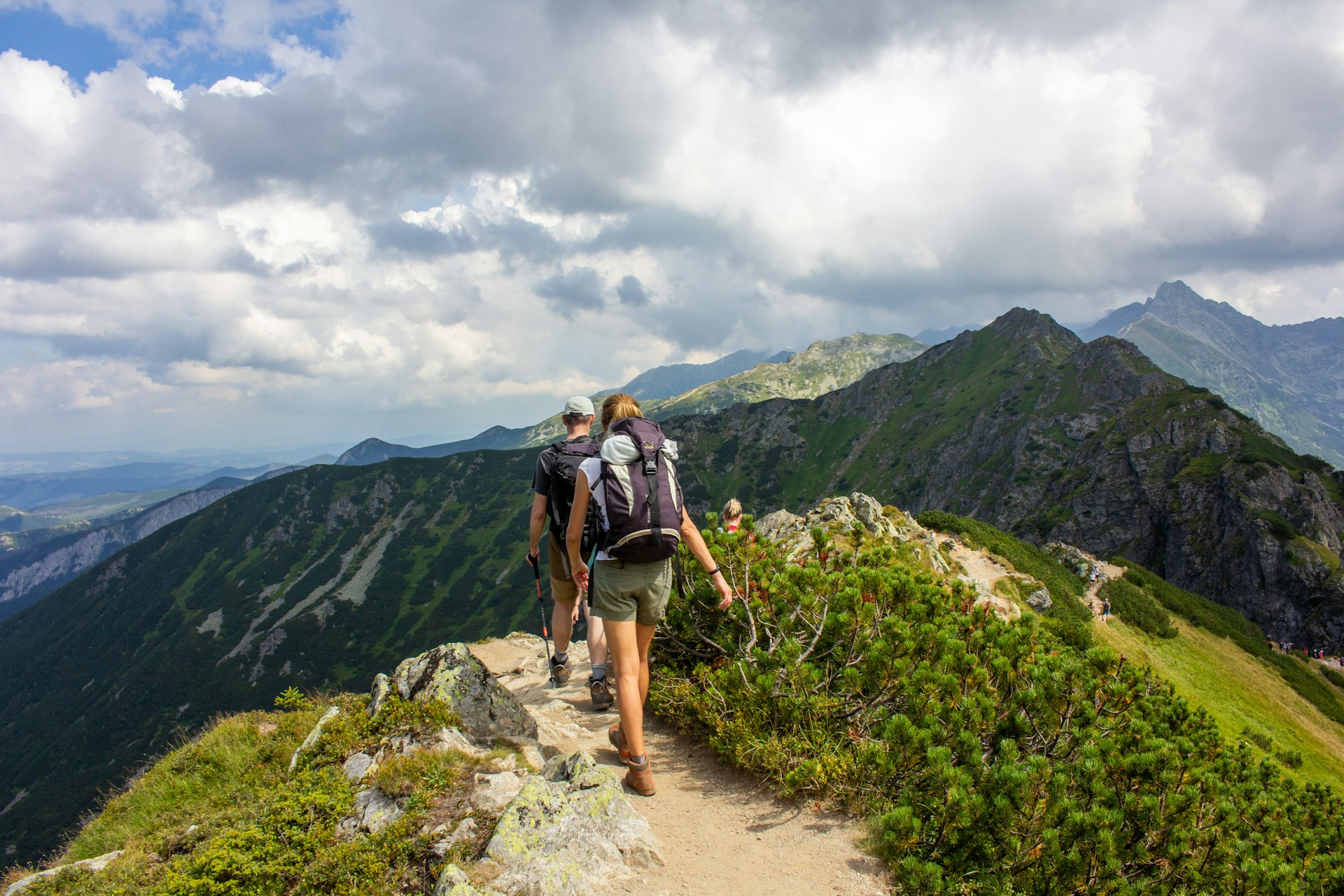
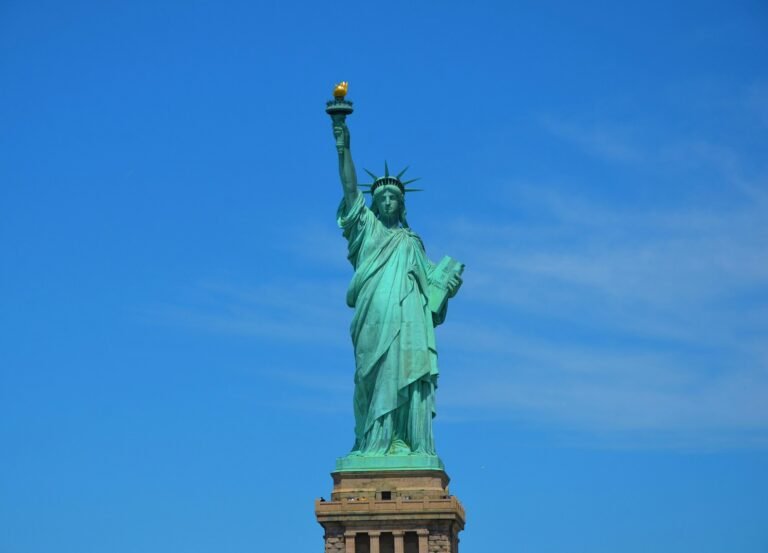
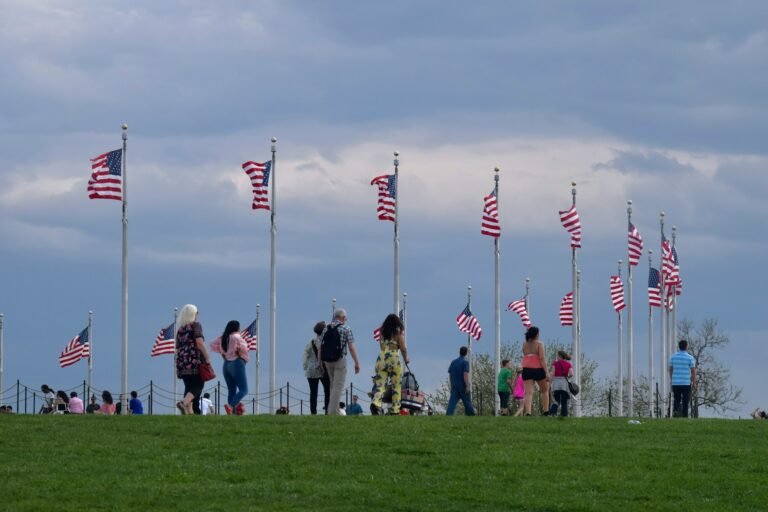
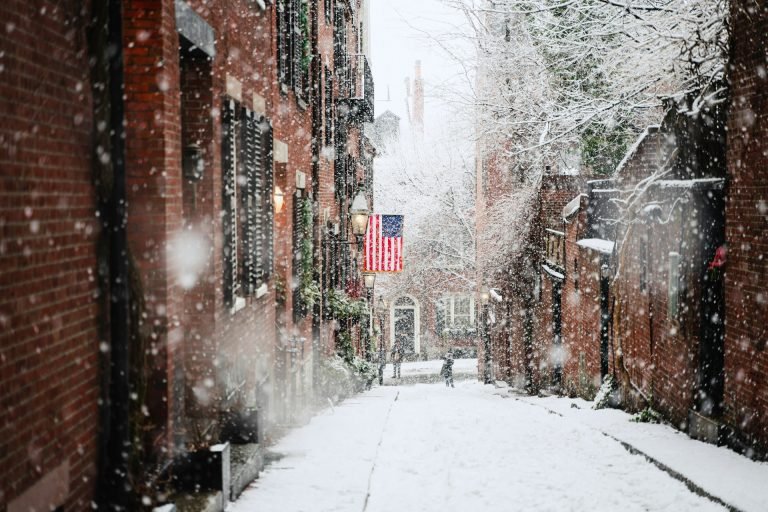

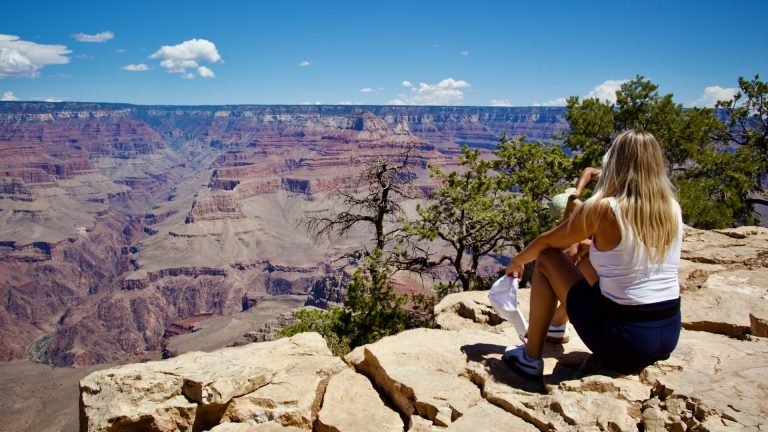
F*ckin’ amazing things here. I’m very glad to see your article. Thanks a lot and i’m looking forward to contact you. Will you kindly drop me a mail?
I’ve been exploring for a little bit for any high-quality articles or blog posts on this kind of area . Exploring in Yahoo I at last stumbled upon this web site. Reading this info So i am happy to convey that I’ve a very good uncanny feeling I discovered just what I needed. I most certainly will make sure to don’t forget this site and give it a look on a constant basis.
Thanks for sharing. I read many of your blog posts, cool, your blog is very good.